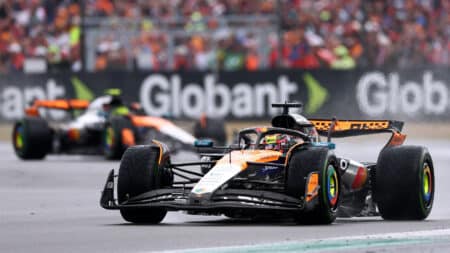
Horner's departure shows age of the maverick F1 boss is over
Christian Horner has now left Red Bull, the last of a certain breed of F1 team principal
Sometimes it is not what is said but who is saying it that provides a statement with its true significance.
To whit if a Lotus engineer had told me that the increasing prevalence of four-wheel drive, turbocharged engines and vast tyres were making sports cars boring, I’d have nodded in agreement and moved on. But when one of Toyota’s chief engineers said as much to me, my interested was pricked to put it mildly. Toyota doesn’t build sports cars of any description, not since it got rid of the Celica, Supra and MR2 in an ill-judged outbreak of maturity, responsibility and restraint.

That, however, is all about to change. Last week at a soaking wet private test track an hour outside Tokyo, I drove the final version of the car that says Toyota is now bored of building boring cars. A normally aspirated, 200bhp, back-to-basics coupé wearing – I kid you not – tyres from a Toyota Prius, I knew they’d hit the right target when I found myself laughing so much at the drift angles it would assume and maintain that I feared I might lose control of both myself and the car.
I’ll save the detailed evaluation for the magazine, where there is more space to do justice to the car they call the GT86, and dwell instead upon the philosophy behind it. It’s so simple: apart from the fact the engine is a flat-four (sourced from joint venture partner Subaru which will sell its own version of this car called the BRZ), its normally aspirated, front engine, rear drive configuration and lightweight construction were once the staple ingredients of any decent sports car.
Not any more. Ask Toyota which cars it benchmarked for the GT86 programme and it’ll say VW Scirocco, Audi TT and Peugeot RCZ. Every one of these has front- or four-wheel drive and a turbocharged engine, ensuring wildly skewed weight distribution and soft throttle response.
Their weights have been allowed to spiral out of control too: the equivalent RCZ weighs 1441kg or, put another way, over a quarter of a tonne more than the 1190kg GT86. Nor is the Toyota full of clever and expensive lightweight materials: it’s an almost entirely steel car that will sell for around £25,000 when sales start here next summer, making it one of the more affordable cars in this class, despite the crippling strength of the yen. It’s just been very carefully put together to make sure it carries not a gramme of excess weight.

It promises to be a Toyota unlike any other. It may look similar in size and concept to an old Celica, but when you drive it, you’ll see why Toyota elected not to give it that name. One small but significant nugget of information given to me over dinner by its chief engineer, Tetsuo Tada, was that it’s the first Toyota in history to have an ability to execute long and elegant drifts written into its development plan.
Why the change of heart? I think it’s down to Akio Toyoda, president and CEO of Toyota since 2009. A hard-nosed businessman he may be, but he’s a true enthusiast too. “I believe that if a car is not fun to drive, it is not a car,” he told us in Tokyo. And if that just sounds like words to you, his actions in the form of regular racing at the Nürburgring speak louder.
Let us hope his sentiments extend beyond the limited reach of purpose-built sports cars and into the philosophy of every car it makes.

Christian Horner has now left Red Bull, the last of a certain breed of F1 team principal

Was Oscar Piastri the real winner in the long run after Silverstone? asks James Elson

Lewis Hamilton hadn't won in almost three years – and then produced a sensational victory at Silverstone 2024. James Elson explains why it was his best ever

Describing this year's championship race as a 'battle' might be slightly over-egging it, writes James Elson